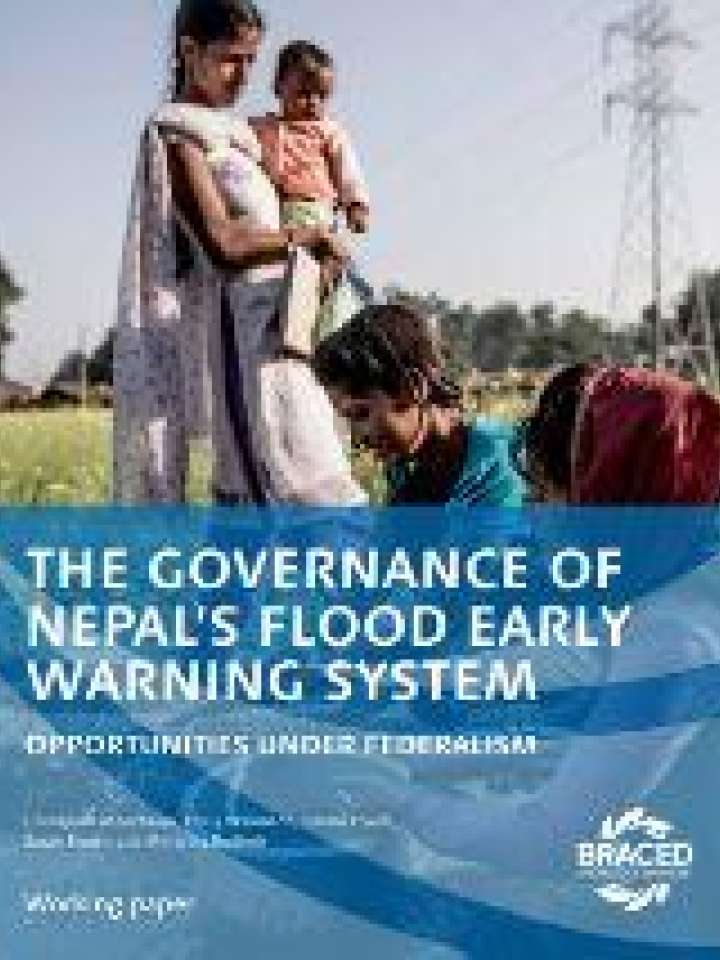The governance of Nepal’s flood early warning system: Opportunities under federalism
Flood early warning systems (EWS) are extremely complex, with multiple layers of communication and relationships between stakeholders, across different scales of governance. With the development of weather and flood forecasting models, Nepal’s EWS has advanced significantly in recent years, but warnings can still fail to reach downstream communities in the low-lying Tarai plains.
Recent governance reforms devolve considerable authority for delivering EWS services to municipal governments. This should result in improved communication of warnings and enhanced flood response capabilities. However, critical challenges and questions remain around whether municipal governments will have the funds and technical capacity to do this.
This working paper looks at the institutional mechanisms for assessing, monitoring, communicating and responding to flood risk information and warnings across three river basins in eastern and western Nepal, and identifies opportunities for enhancing these services under the new federal structure.
Decentralising government responsibilities and resources could bring huge benefits, including higher-resolution risk maps, investment in local monitoring stations, a greater focus on response planning and engagement with communities and marginalised groups. To ensure that these benefits are realised, community-based and NGO initiatives will need to be better integrated within the national system, and local agencies will need substantial training and capacity development to meet their new responsibilities.
Explore further
